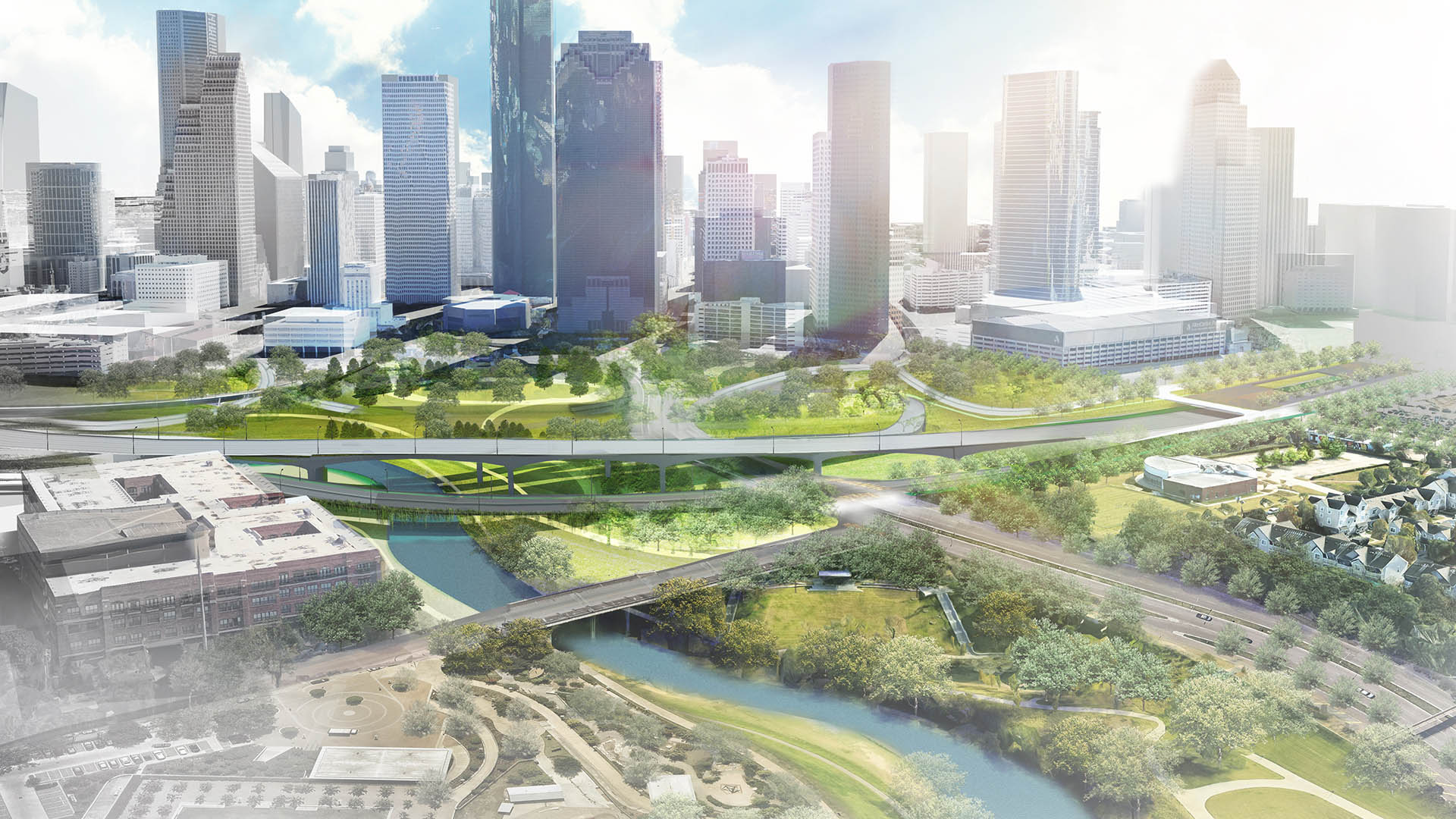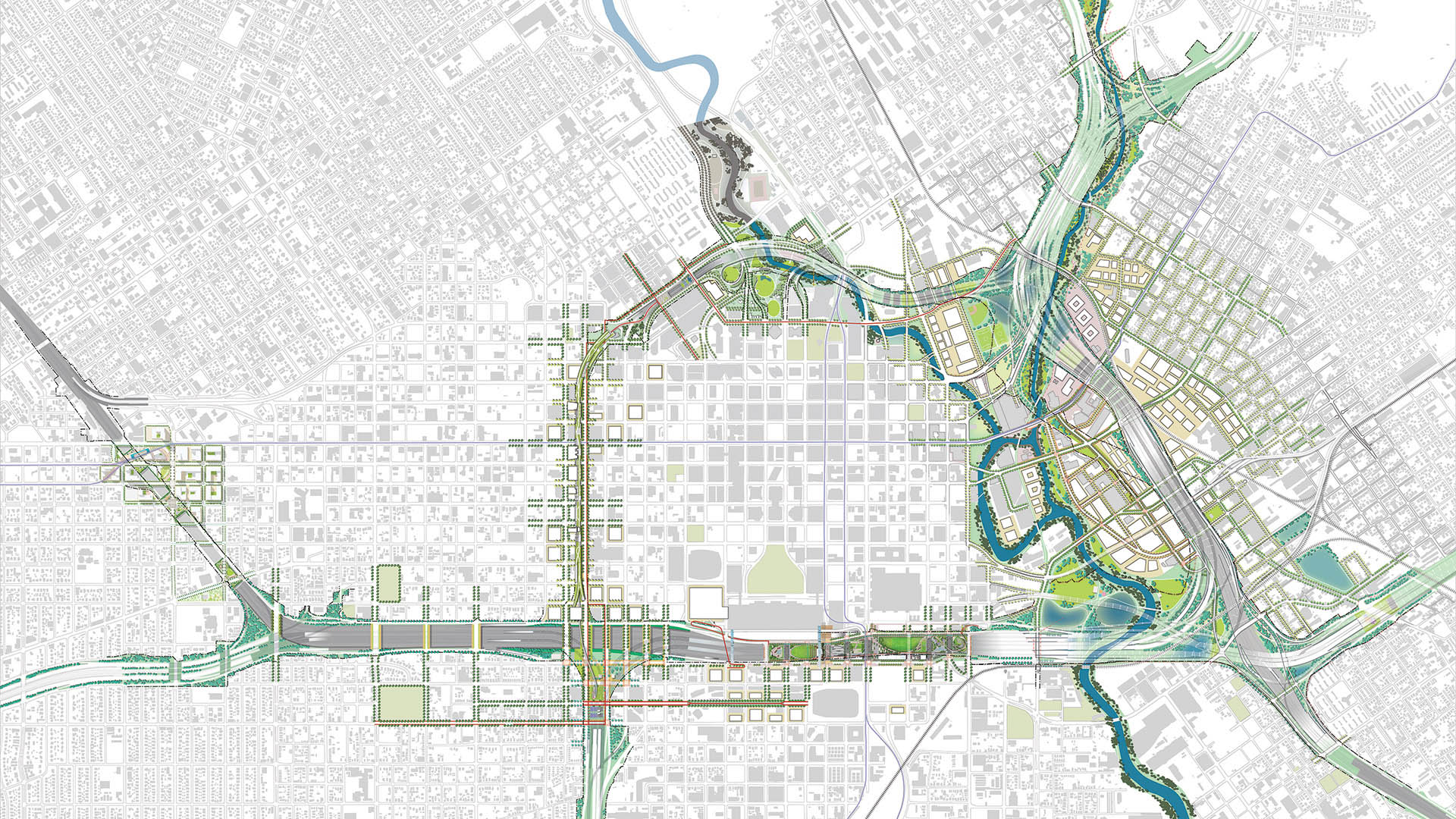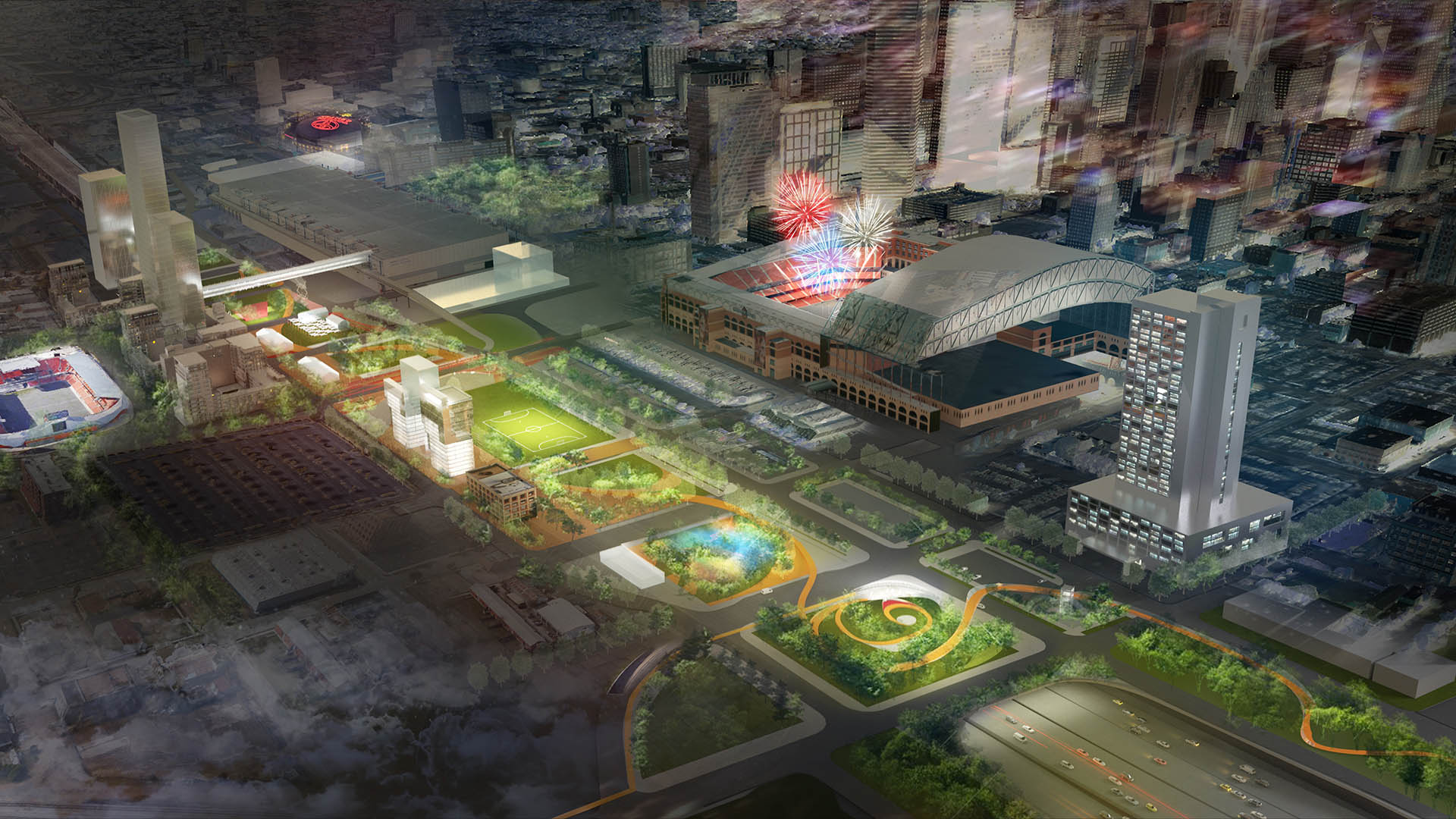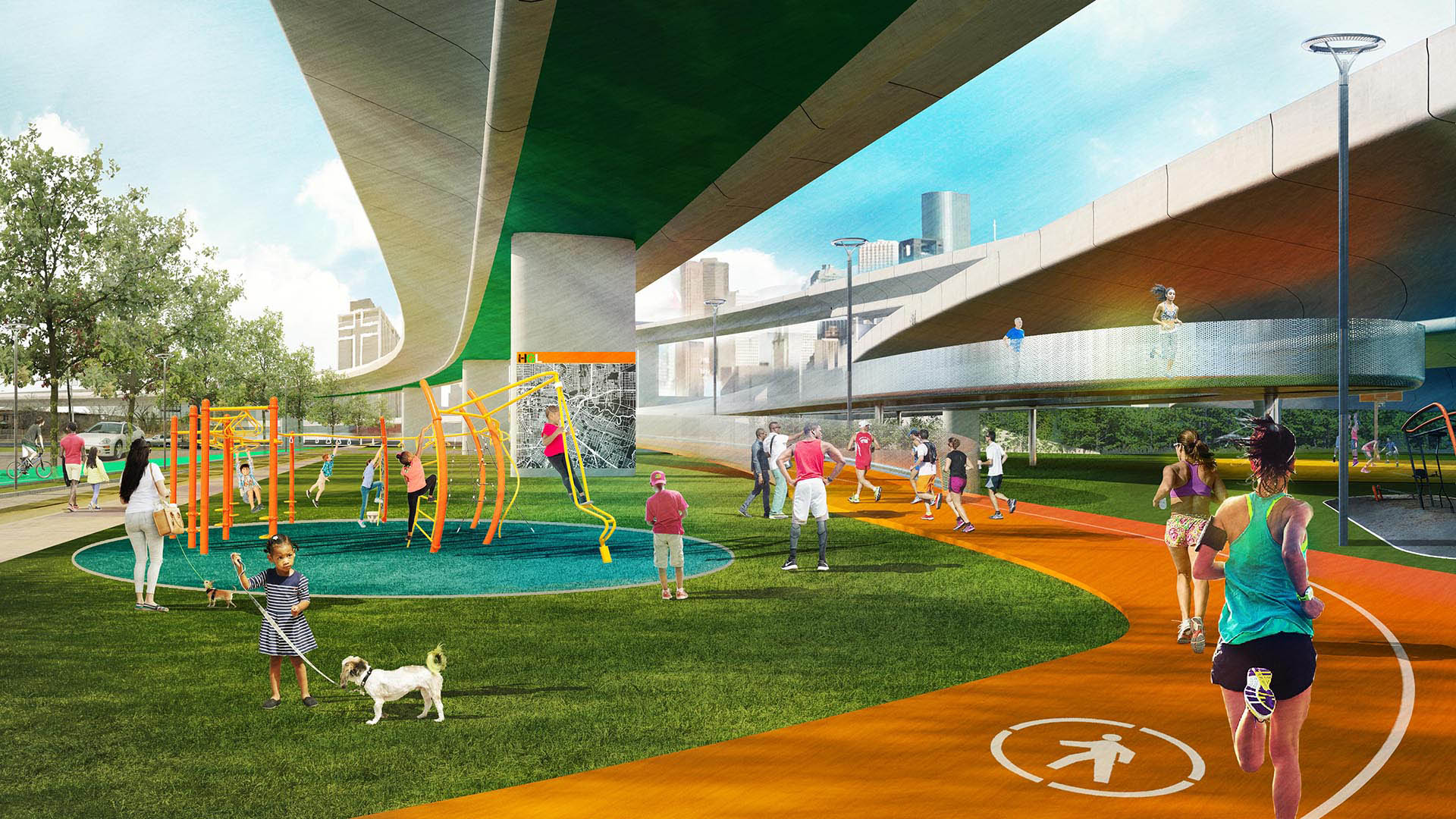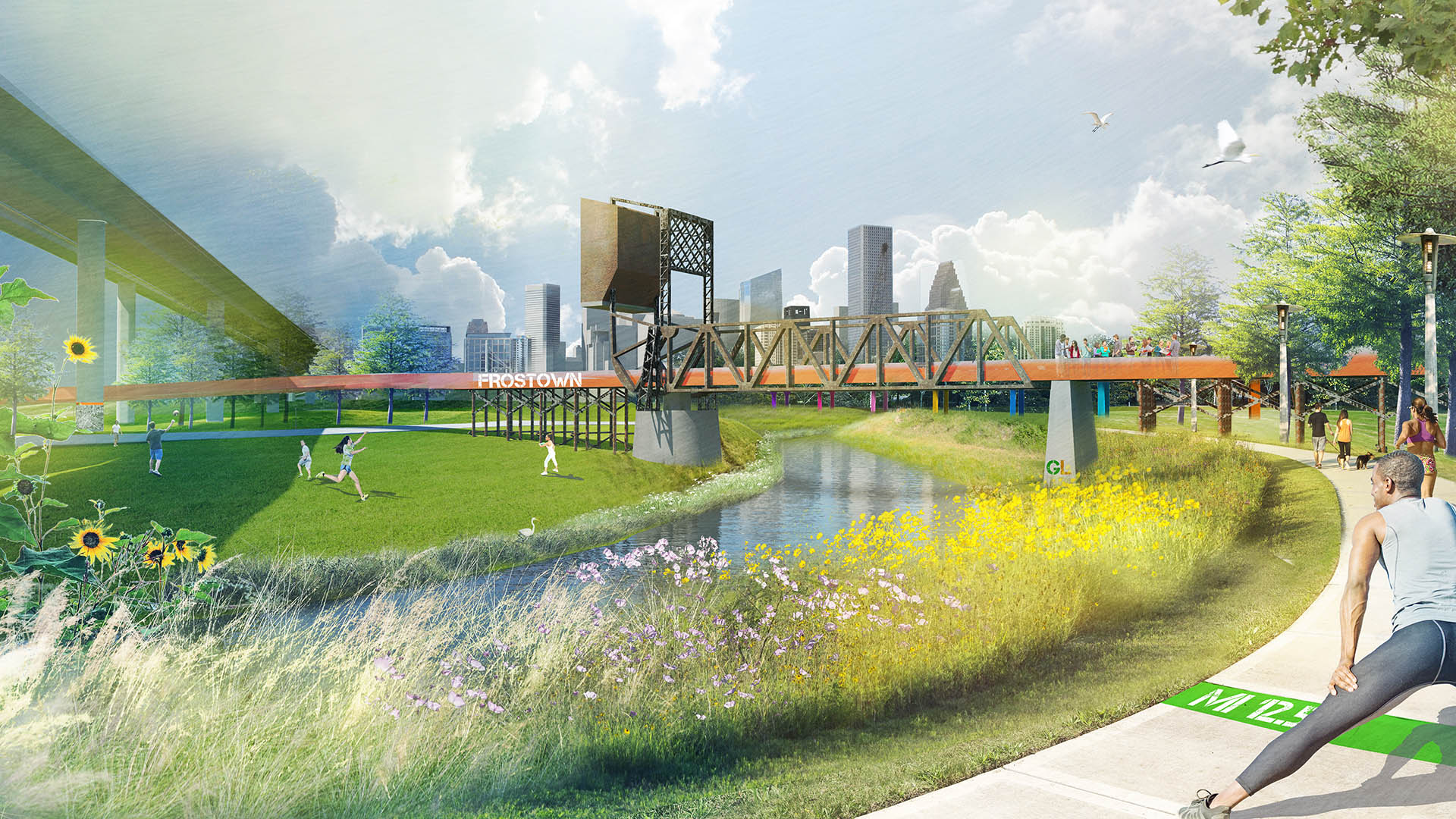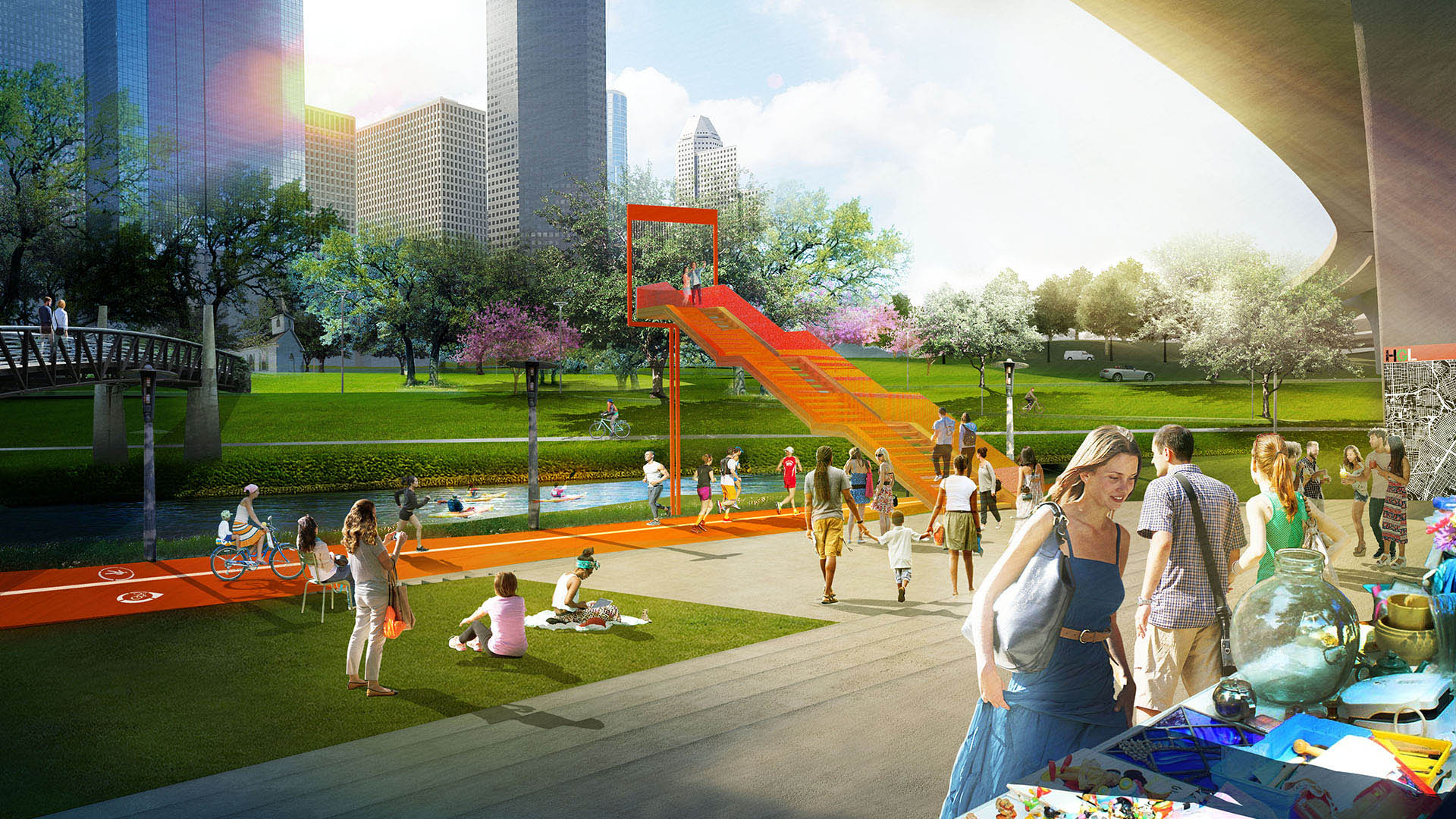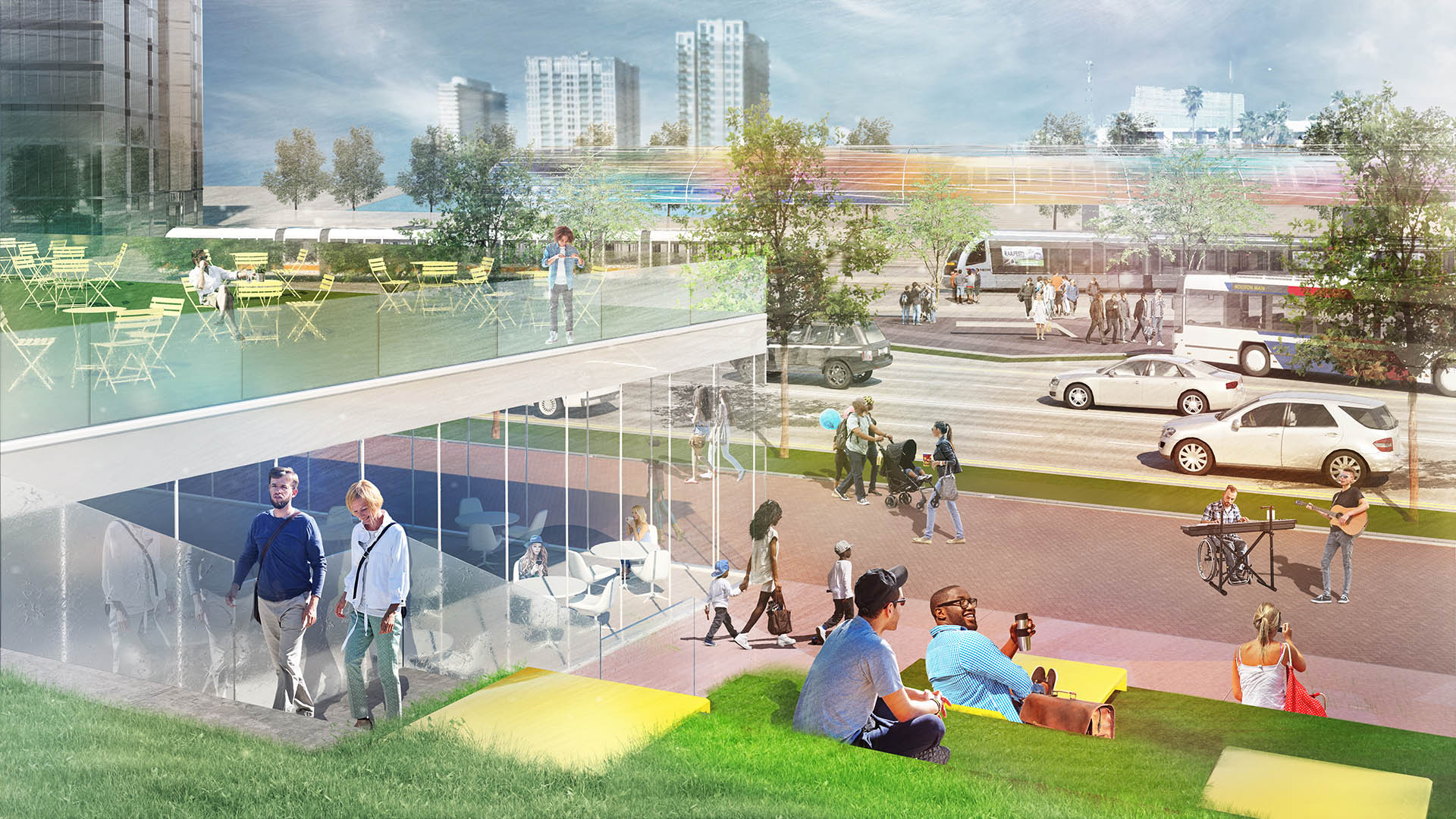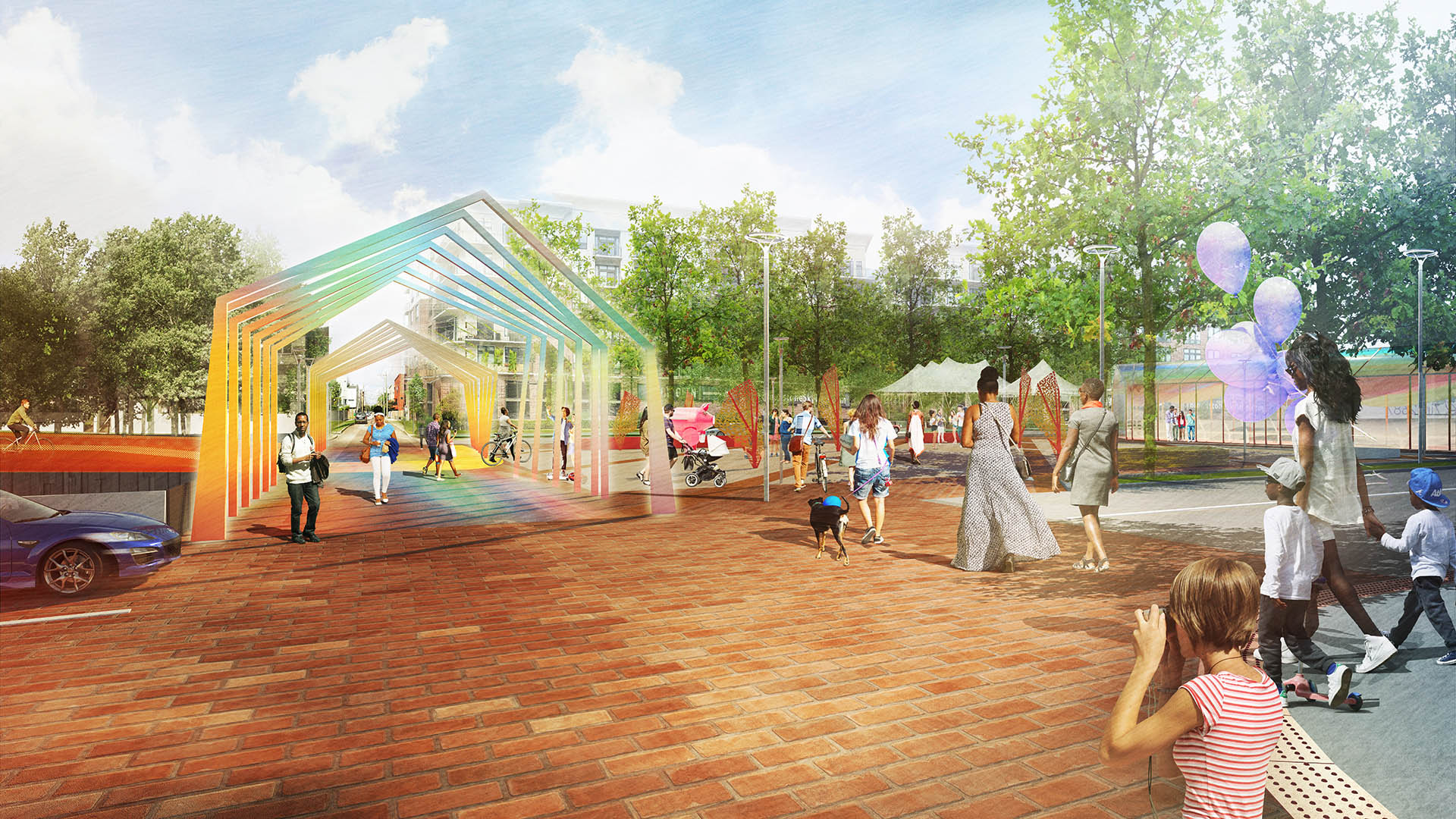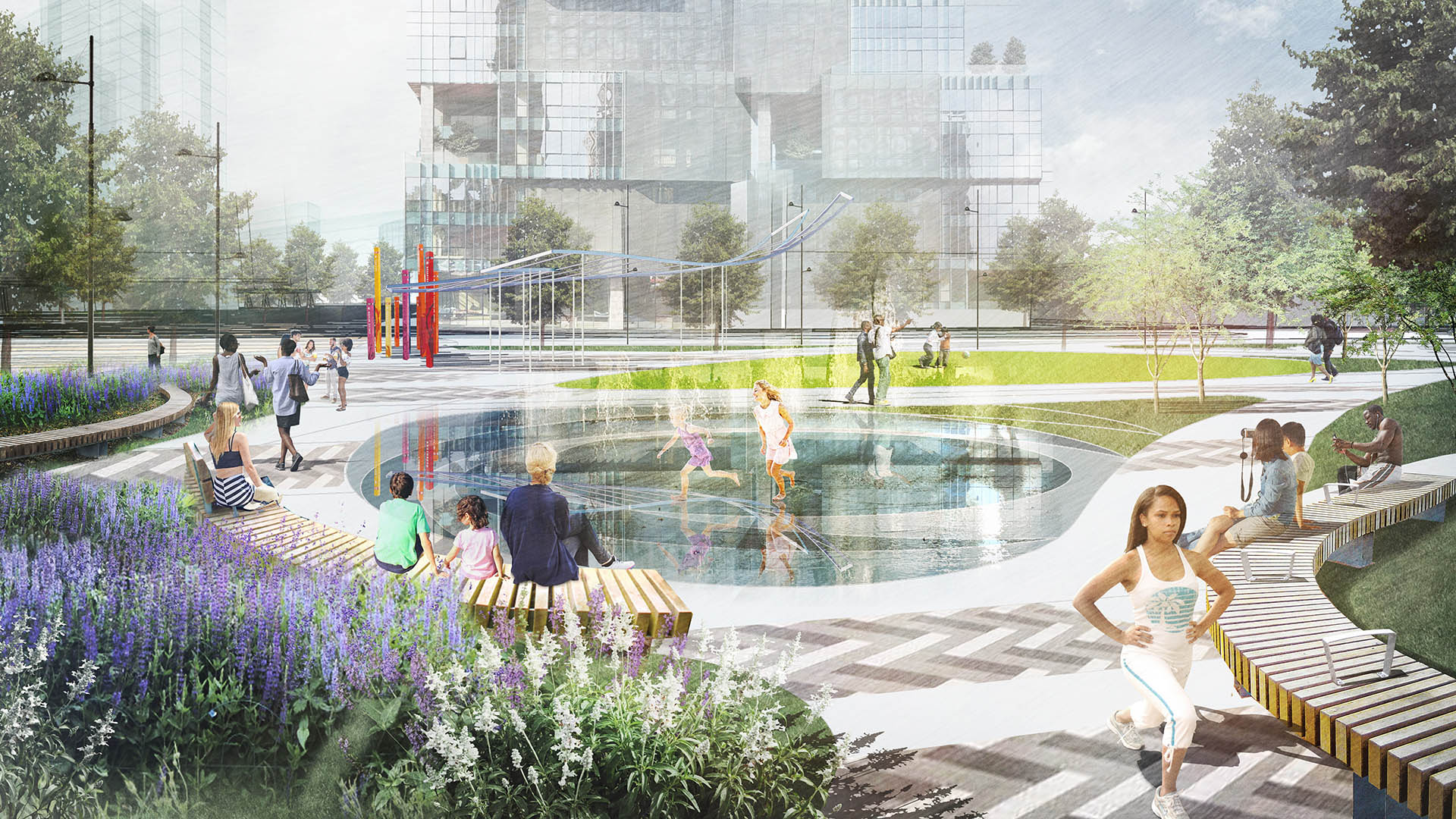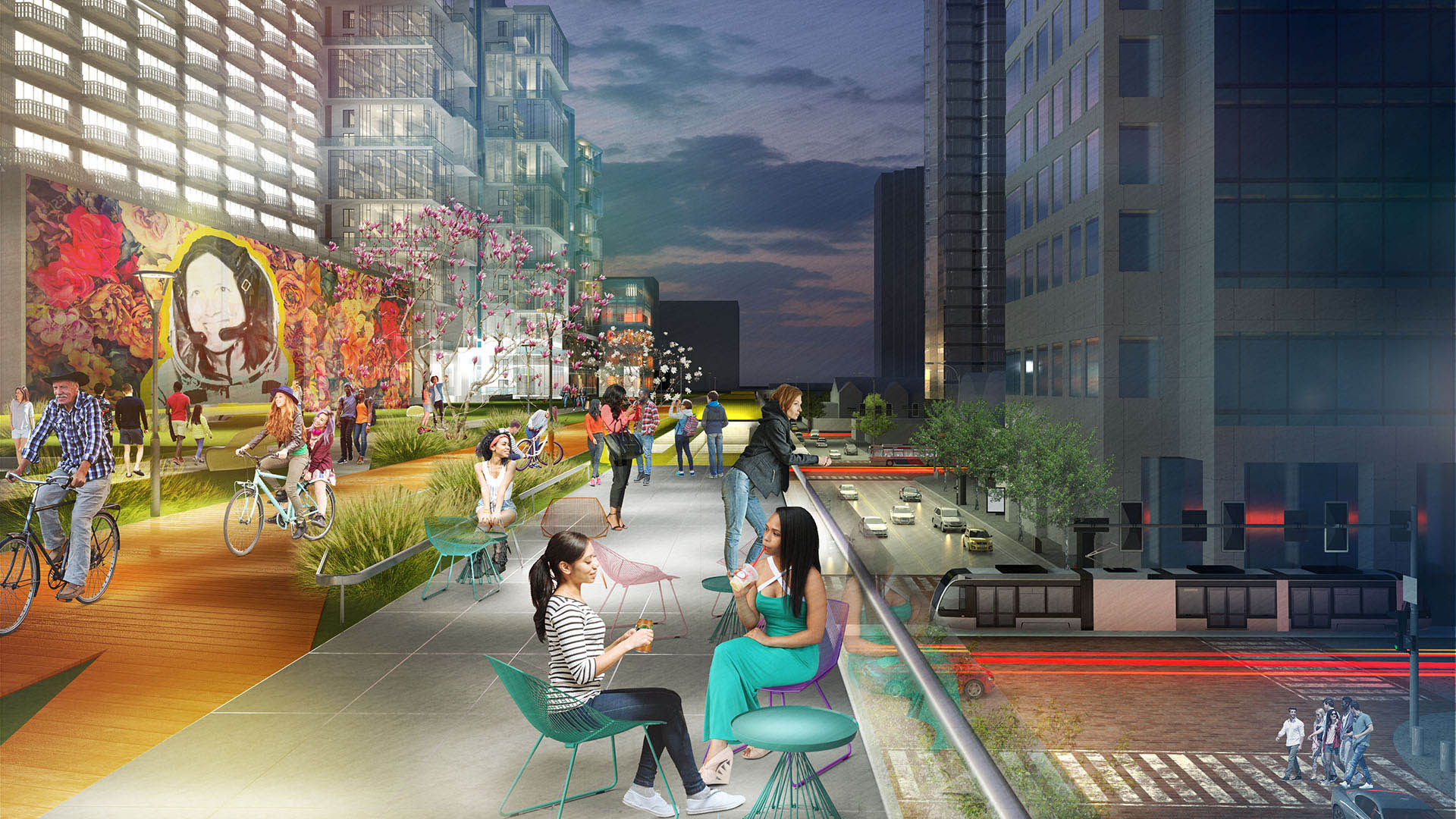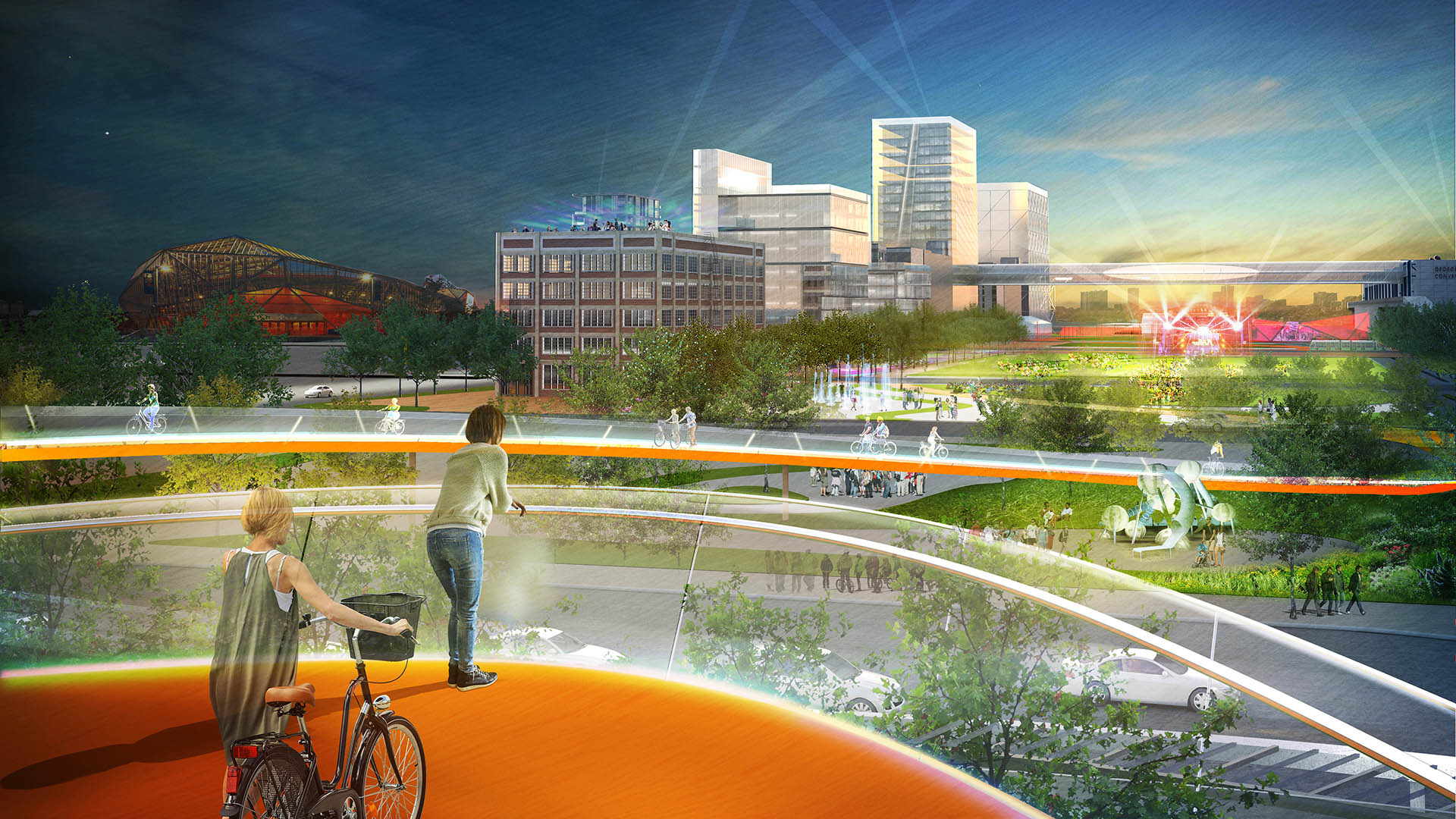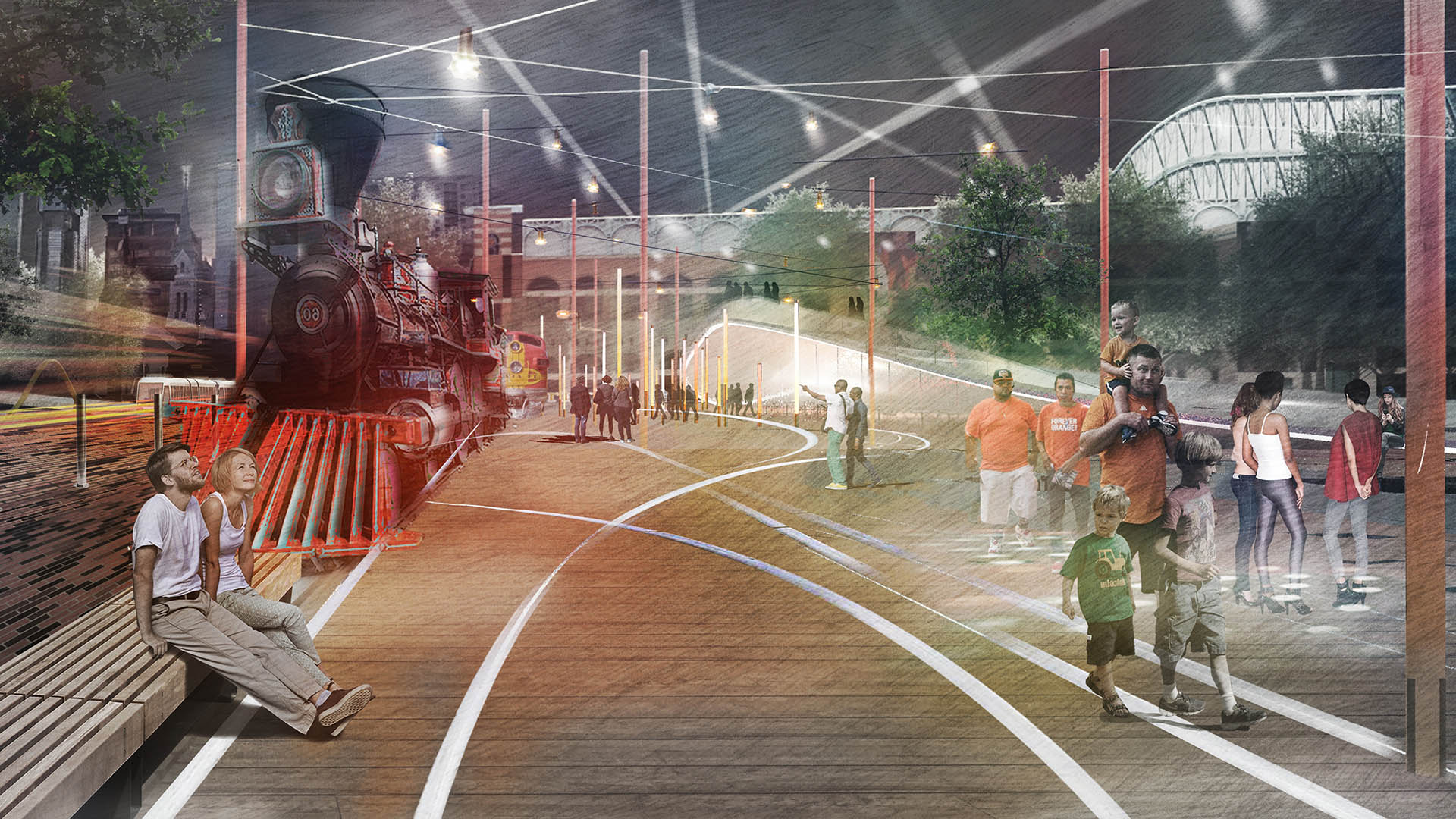As Houston’s Downtown has developed and expanded over many decades, public green space has been increasingly constrained by several interstate routes: primarily I-59, -45, and -69. These thoroughfares, while essential for commuters, have left little room for workers and nearby residents to enjoy unimpeded access to their locale’s adjacent trailways and bayous, and the benefits of a temperate, if flood-prone, climate.
Working in concert with Houston Downtown Management District, traffic engineers at Walter P. Moore, and major stakeholder groups, SWA brought a fresh perspective to TxDOT’s desire to improve the highway system, envisioning new ways to realign existing routes and in some cases, to move them underground – freeing up the city surface for cap parks and additional connections to the firm’s ongoing work on local bayou trail systems. SWA proposed consolidating the pathways of I-45 with I-69, an approach which removes existing elevated infrastructure, partially relocates it underground, and replaces it with an at-grade parkway that reconnects adjacent districts along the roadway and bayous. This parkway feeds directly into the grid of the downtown streets.
Being located square in the middle of North America’s “sun belt,” Houston, TX is ripe for adaptive, climate-friendly, and civic-minded interventions in this vein. The Houston Green Loop, an outcome of the firm’s earlier planning work, builds on these ongoing efforts to establish a Downtown “girdled” not by freeways, but by open space systems – serving both commuters and bordering communities who had been previously cut off from vital local connections and vibrant ecology. Proposed amenities along the Green Loop incorporate unique, pedestrian-scale experiences that offer meaningful exchanges among neighborhoods and urban districts. The vision reimagines the “civic commons” with trails, running paths, restoration of a historic bridge, and detention ponds to further the project’s resiliency goals.
Exemplifying the vision that landscape architects can bring to urban environments, the careful repositioning, demolition, and consolidation of Downtown Houston’s major rights-of-way paves the way to a more resilient future for cities worldwide.
Diridon Station Area Plan
In the area around Diridon Station, the City of San José and the greater Bay Area region have the unique opportunity to build an internationally prominent transportation hub and to develop a world-class destination. This plan weaves new ideas and new development possibilities into the city’s distinctive neighborhoods and existing urban fabric. Large proposals,...
John Wayne Airport
SWA served as landscape architects at the new airport terminal located in urban Orange County. Landscape improvements, totaling 20 acres, consisted of a large open area adjacent to the terminal, and narrow planting areas framing the site. The particular challenge was to create an appropriate image and scale for a civic project of enormous scale, including park...
Bray's Bayou
Stretching 35 miles from the mouth of the Houston Ship Channel westward through residential, commercial and institutional developments, Brays Bayou is one of the most important waterways in Harris County, and a critical link in the area’s watershed. The $450-million project was first established in the early 2000s, with the goal of mitigatin...
King Harbor Public Amenities Plan
SWA’s work on the King Harbor Public Amenities Plan manages the site’s vulnerability to severe ocean conditions by updating existing infrastructure, providing new programming, and creating a plan for sea-level rise and King Tides. The Amenities Plan serves as a powerful tool to guide growth both for the waterfront’s immediate future and its long-term success. ...


